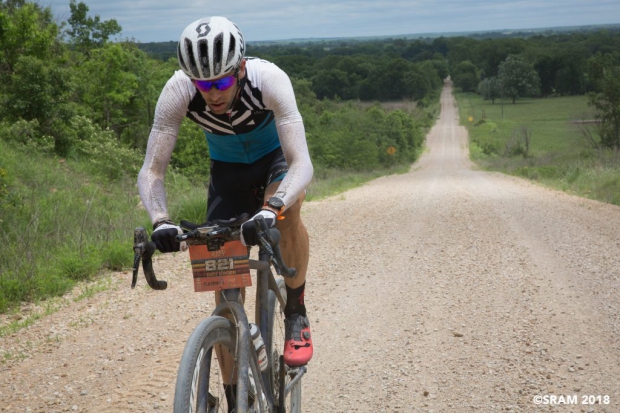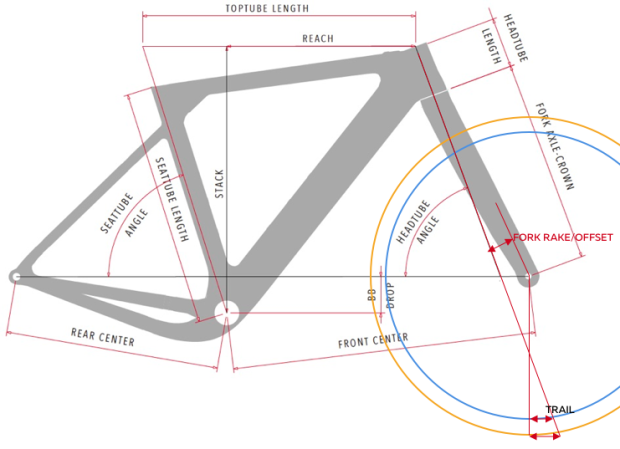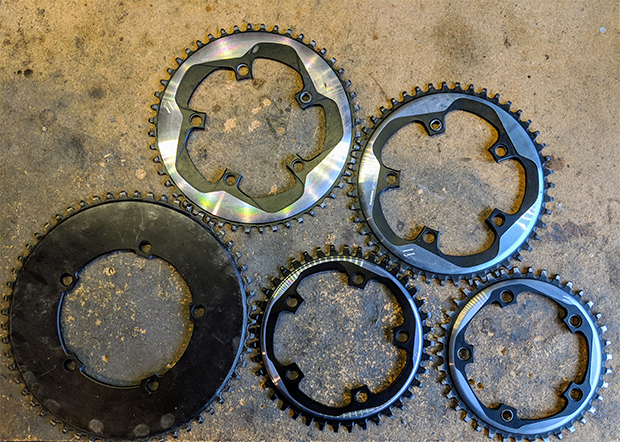3T Exploro: Can N=1?
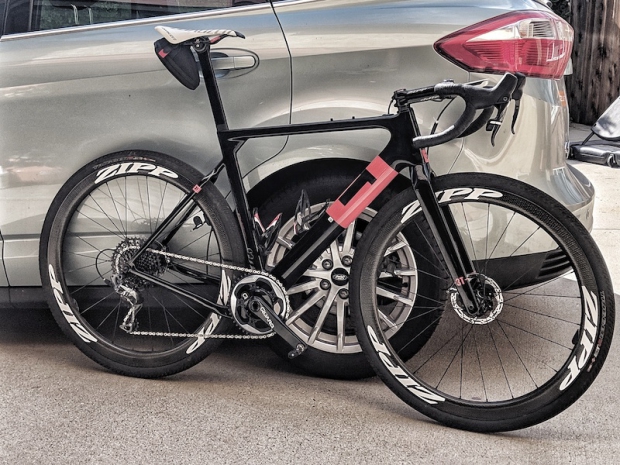
There's a classic rule in cycling that N+1 is the number of bikes you need, where N is the number of bikes you currently have. The 3T Exploro challenges that rule and may be the first truly N=1 bike.
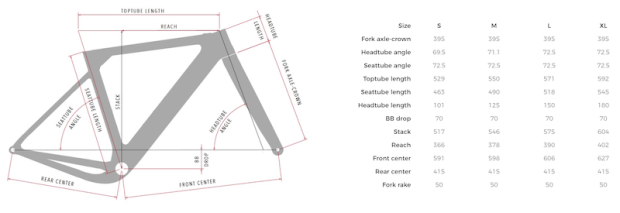
While its geometry – and frame-specific seatpost – are not ideal for a triathlon bike, I'd also say that – with a noseless saddle – the moderately slack head tube certainly allows it to be a functional tri-bike. The reach is short – so you'll end up with an overly long stem for a TT bike – but if you're an avid gravel racer who occasionally dabbles in triathlon, I'd say that you can run the Exploro as a tri-bike if you need to. The biggest issue is actually the frame clearance for chainrings. If you want to run this bike as your tribike, you'll need to run an AXS 2X groupset. The frame will only clear a 46T (offset) 1X ring, which even with a 10T cog is inadequate. With a 2X groupset, you can run up to 50T, which is more than you'd need with a 10T, and I'd say that a 48T is what most folks will likely choose. The reason you need to go with AXS is that, prior to it, the gear ratios just weren't there for 10T-equipped cassettes.
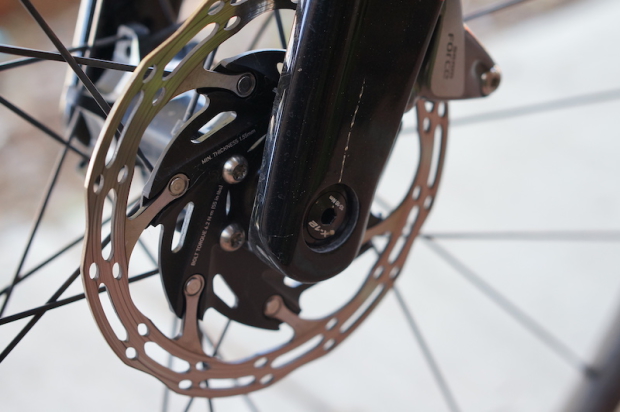
Of course, using the Exploro as a TT/Tri bike is certainly not its intended use, but given the audience of this site, I thought it worth at least exploring the possibility. If SRAM ships (or offers) AXS brakes with their quick coupler then you could change the bike from road/gravel to TT/Tri pretty quickly, but the quick couplers for the HRD system are essential here. Speaking of brakes, I've been riding 3T's new(ish) flat-mount brake variant which more cleanly accommodates the most common rotor sizes for mixed road riding – 140mm & 160mm (I ride 140mm front and rear) – than the original post-mount version. There's not a meaningful difference, really, between post-mount and flat-mount brakes for smaller rotors, but flat-mount sure does look cleaner.
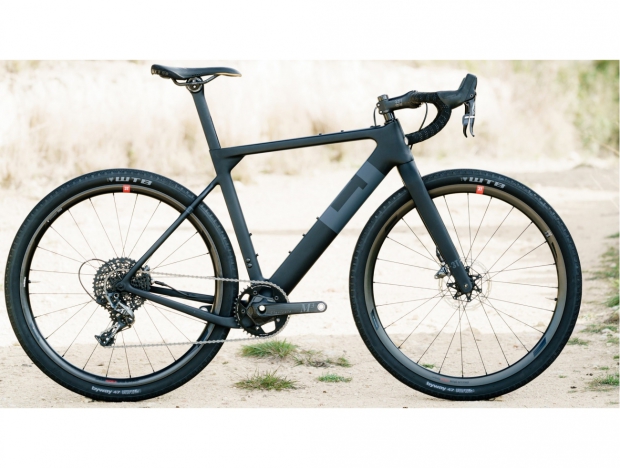
The real crossover for the Exploro is as everything from a road bike to a "gravel" bike to a mountain bike. It takes both 700C and 650B wheels – up to 55mm in 650B – and the kammtail shape of the downtube and the clean lines of the fork, seatpost, and seatstays all make for a legitimately credible aero package, not surprising for a Gerard Vroomen-designed frame. The oversized BB386EVO bottom bracket and "compact" geometry make for a very responsive frame – it climbs, especially off-road, like a rocket – and the dropped frame at the seatpost makes it easy to clip out of the pedals and put a foot down on technical terrain if you find yourself using it as a drop-bar XC bike.
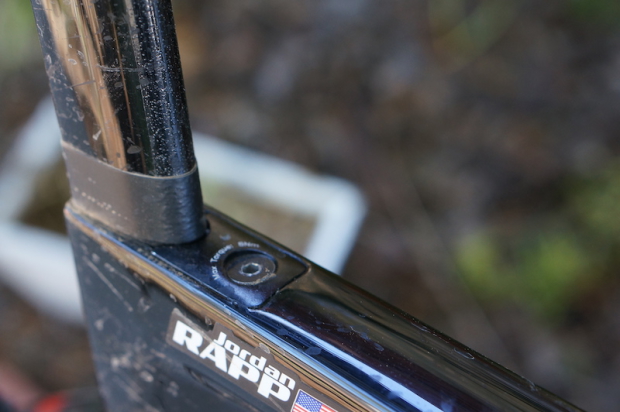
If you want to drop the post, the 4mm bolt to loosen and tighten the expansion wedge is easy to access on the top tube, though the Charlie Sqaero aero post means that you're prevented from using an actual dropper post, something that is becoming more common on gravel bikes when they're used in places where a true mountain bike may have been used in the past. But it's reasonably quick to adjust the post if you've got a long, technical descent coming up.
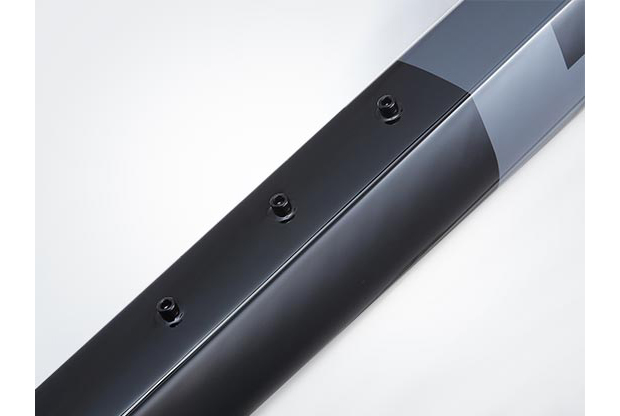
What I think is most surprising about the Exploro is not just that it can function in so many applications, but how well it does so. It's not just a serviceable bike; it's a great bike. If you want a bike that truly can ride pretty much everything and ride it well, this is it. Proper tire selection is essential here, and I'd say that pairing the Exploro with a fast-rolling, high-volume slick like Compass's (now Rene Herse Cycles) Snoqualmie Pass (700C x 44mm) will give you a package that will excel in a surprisingly wide range of conditions. I used this setup to decimate my best performance on a long fire-road climb that I use a performance benchmark by about 15%. But I was also able to happily ride on the road to and from those trails without feeling like I was on a bike that truly belonged offroad. This was the bike – with those tires – that I wished I'd had at the Belgian Waffle Ride.
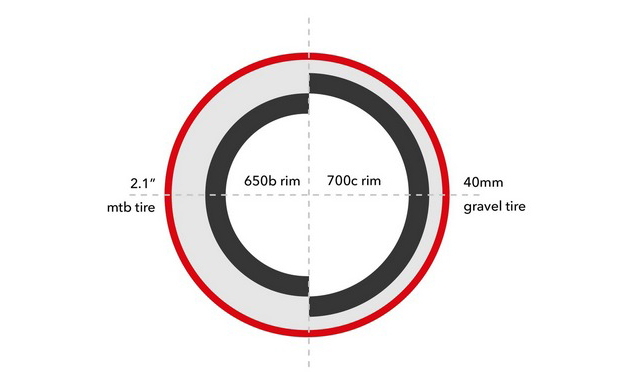
I think – though I'm biased because it's what I want to be the case – that BWR represents the future of bike racing in the US. This sort of racing has a rich history in Europe – Paris-Roubaix and Strade Bianche are two of the best examples of the pinnacle of this type of racing and also a reminder of just how functional a "normal" road bike actually is, even with relatively skinny tires. But I think that bikes like the Exploro are making these sorts of routes more accessible to more people. I'm not sure that I have the technical skill to ride Roubaix on a road bike, but I'd be a lot more confident even attempting it on a bike like the Exploro with 35mm+ tires. And I think that's true for a lot of people. It's not that someone can't ride many of these routes on a road bike, it's just that it's that not easy or even doable by everyone.
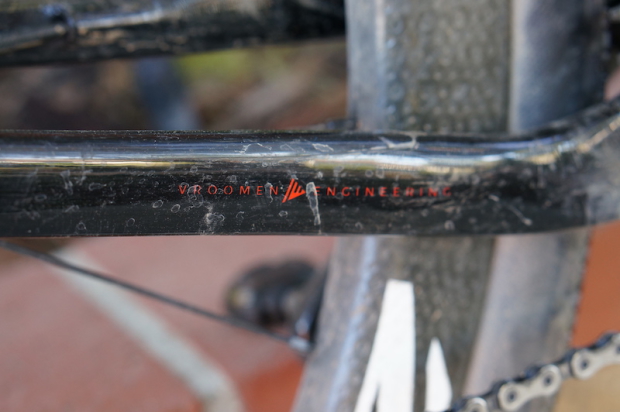
Personally, I think that the Exploro truly is a race bike, though how you define what race means to you can certainly be broad. While the Exploro doesn't have fender mounts or rack mounts, because those things would be a compromise for all of the many other things it does well, it's still serviceable as a touring bike, at least for a few days. Rather than relying on rack mounts, the Exploro pushes you to use bar-mounted, frame-mounted, or saddle-mounted bags, which are likely more aero and more favorable for weight distribution than the classic fork mounted pannier. With adventure cycling becoming more popular, more companies are offering new – and, in some cases, improved – ways to carry a lot of stuff and the days of bolting bags to frame may be over for all but the longest hauls. 3T maintains a beautiful blog chronicling such adventures.
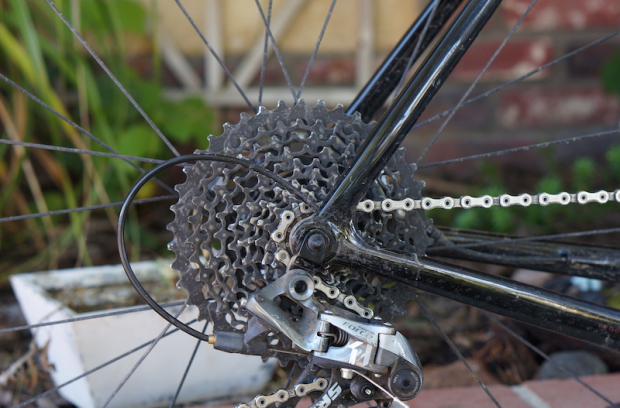
When I set out to write this review, I didn't set out to write something so meandering, but it seems appropriate. Riding the Exploro gives you so much freedom that riding becomes much more spontaneous. You don't really need to plan ahead. You can hit the trails or the roads. You can attack fast climbs or you can tackle technical descents. It's a bike that lends itself to riding as an adventure, as a narrative, as an exploration. The bike's motto – Go Nowhere Fast™ – is beautifully succinct. And it just didn't seem right to try to fit this into more categorical "review" of shifting, braking, climbing, and descending; that doesn't really capture what makes this bike so good. The bike has exceeded my expectations in every venue, and I can say without reservation that it's the best all-around bike that I've ever owned. No other bike has done so many things so well.
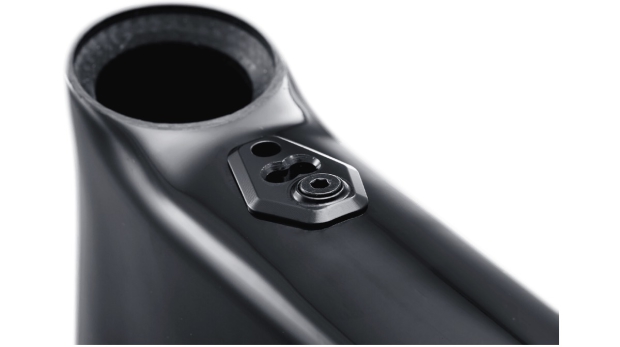
As with any adventure, however, there were some downsides. The frame lacks full run housing guides, and on the frame that I got, the finish on the rear brake outlet was rough enough that I couldn't get the hose to push through. Slender cable guides were fine, but a full hydraulic hose? No way. I actually managed to wreck part of my Park internal routing kit before I realized I needed to look inside to see what was going on. With a flashlight, I was able to see that the internal finish for the brake cable exit still had excess material; thankfully, I have a 5mm (approximately) round file and was able to gently finish the hole and get the brake line through. But compared with, say, the Lauf True Grit with its full-run internal cable guides where you simply feed the housing in and watch it pop out in the right location, this was much more of a headache. It took me the better part of an afternoon to cable it, and there was a great deal of profanity involved. I'd definitely recommend giving this frame to a good wrench to build. I am not enthusiastic about switching this frame over to Red or Force AXS at some point…
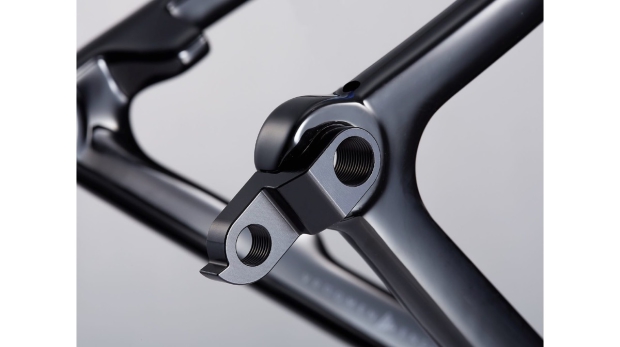
But once the bike was built? It's been trouble free. As with any expansion wedge seat-post binder, it takes a bit of fiddling to figure out the spacing that causes it to hold the post securely. And the splined 3T saddle-rail clamp system lacks the micro adjustments of a two bolt or single-bolt-compression-wedge design, so if you are extremely sensitive to saddle pitch, that may be an issue. The Charlie Sqaero seat-post is probably the weakest link in the whole system, especially the splined saddle rail clamp. Restricting people to 10-ish degree jumps in saddle pitch just seems odd. And if there's one overwhelming reason to buy the Open U.P. – Vroomen's other multi-road masterpiece – the fact that it takes a normal, round seat-post would be it. But I've logged plenty of long days in the saddle on the Exploro and have never had an issue, but some of that may just be that my particular saddle of choice – the Specialized Romin EVO – just happens to allow me to get it at the right pitch. On the bright side, the splined interface insures that the saddle will never, ever slip, though I still think a two-bolt system a la the classic Thomson is just a better way to do things. I've never been a fan of single-bolt saddle rail clamps, and that's true here as well. But a lot of that is just nitpicking because there's nothing else about the bike I don't like. I'm not a huge fan of press-fit BBs, but with a nice CeramicSpeed BB386EVO BB in there, it's been trouble free. I prefer threads, but I'm not sure if the bike could accommodate such a wide range of tires with a BSA bottom bracket. Vroomen goes in depth on the BB decision (scroll to the bottom) on the Exploro site.
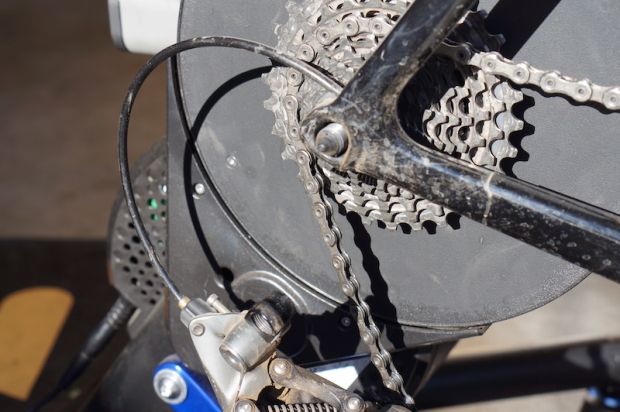
While I'm obviously much fitter and much more experienced as a gravel racer, it's hard not to love a bike that has helped me axe huge chunks of time off virtually every trail I ride. The highlight, so far, has been riding the Exploro to a narrow 2nd place by about a minute at the 2018 Peloton Gravel MOB, shaving 30+ minutes off my time from the previous year. While a good chunk of that is certainly fitness and experience, I'm continually impressed by the nimbleness and and responsiveness of the frame. I would take a bit more front-center for descending – something where the Lauf True-Grit and some other more slack-head-tubed bikes have an advantage, the Exploro is so much more responsive uphill that I don't think I'd actually change the geometry. I am a climber by nature, not a descender, and I prefer a bike that climbs well even if it makes it a bit less fun coming back down.
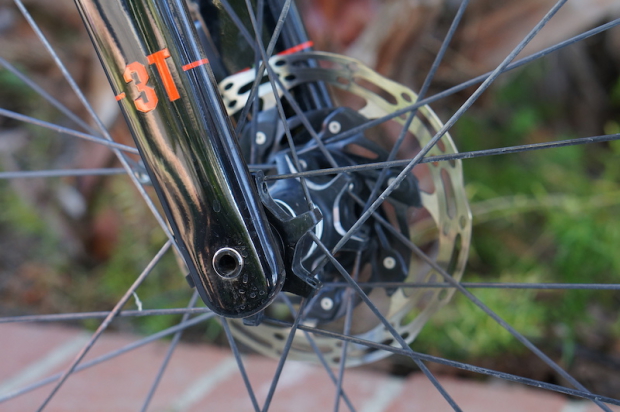
Syntace's through-axles (12mm front and rear) are a nice choice and are beautifully machined to fit flush to the frame front and rear. As compared with more generic OEM through-axles, these are a clear step up. The Hang Loose derailleur hanger takes a bit of getting used to, but if you want to talk about a system that takes one of the most fragile parts of a frame and virtually eliminates the risk that damaging it will damage the frame as a whole, this is it. It's a great system and something that truly capitalizes on the through-axle design to improve the functionality and reliability of the frame. I put the bike on and off the trainer regularly, and I now find this system as easy and intuitive as a normal quick release system. Honestly, I think every bike with through-axles should use this design for the rear derailleur; it's just better.
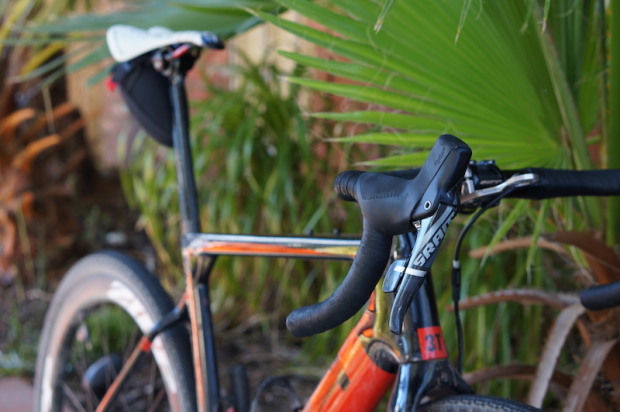
Currently, I have my bike set up with a 42T front ring and the 10-42 11speed cassette in the back. I'm running 140mm SRAM AXS rotors – I did some of the final rounds of field testing on these rotors and have been very happy with them and haven't felt I needed any more stopping power or a 160mm in the front. I'm on Force1 mechanical HRD with a long cage rear derailleur and standard road bars in a relatively narrow 400mm width with a -4deg 130mm stem. I'm a bit more upright than I am on my dedicated road bike, but this makes the drops a more useful position when descending technically. 3T sent a long a pair of their SUPERGHIAIA "mustache"-style bars, but I'm just extremely sensitive to bar width and didn't find that they suited me. The extra width in the drops – which offers greater control – is certainly a nice feature for people who push the technical descents, but that's just not me. I do, however, think it is the best implementation of a flared bar I've seen because the hoods are straight, meaning that position is unchanged, unlike many flared bars which put your all-day position at a weird angle. More on this bar in a future review.
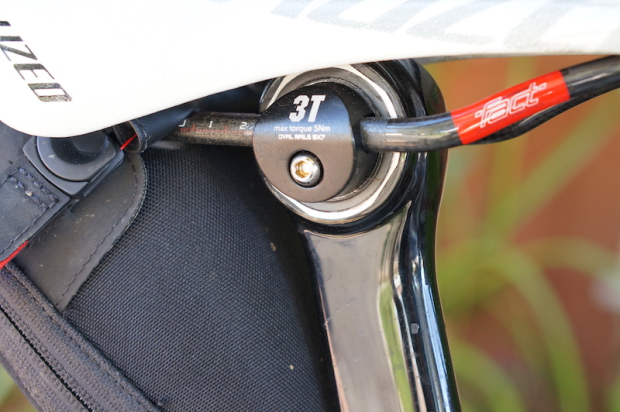
The aero factor is an interesting one. Looking at a race like Dirty Kanza, with its long stretches of exposed flatlands in the brutal Kansas wind, you can see why – even at relatively slow speeds – that aero matters, because your relative speed into a headwind can be quite high. Of course, the frame is a relatively minor aspect of overall system drag, but when you're talking about a long – really long – days in the saddle, even a few watts add up. Would I choose the Exploro over the Lauf True Grit for Kanza if I ever do it again? Hard to say. The suspension fork of the True Grit is amazing over the constant washboard. For me, the Exploro is the obvious choice for climbing intensive races (like the Gravel MOB) or anything with a lot of road (like Belgian Waffle). And, of course as evidenced by Mat Stephens' win aboard the Exploro in 2017, it's certainly more than capable on a course like Kanza as well.
The Exploro is a hard bike not to love. With a change in tires, a change in pedals, and a change in gearing, there's virtually no limit to what the bike can become. The only regret that you may have is that it makes it that much harder to convince yourself (or anyone else…) that youneed another bike…
Update 2019-04-17 13:52PDT: Following publication, Gerard Vroomen pointed out that I'd missed the true functionality of the saddle rail clamping system. From Gerard, "Seems you missed the true working of the seat clamp. It’s adjustable by 0.5 degree. There are two splined rings and you need to rotate both you rotate the outer ring 10 degrees in one direction and move the inner ring 9.5 degrees in the other direction and voila, you have rotated it by a net 0.5 degrees. And it cannot slip." Thanks for the correction and apologies for the oversight.


